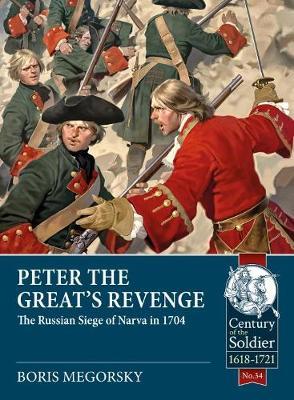Peter the Great's Revenge

Peter the Great's Revenge
Military campaigns in the Baroque age across Europe were far more fortress-oriented - field battles were few while sieges were many. Even then, Narva's two sieges are extraordinary as they provide samples of nearly all possible siege tactics typical to the period but rarely applied to one and the same town. Telling the story of these 1700 and 1704 events thus gives us a chance to speak about the mechanism of fortification warfare, about everyday life of the besieger and the besieged, about morale, military customs of that time, and about broader context of the resolute struggle between Tsar Peter and King Charles.
While writing about Narva's sieges there are a number of plots to be covered. Lines of circumvallation - their perception in contemporary military thought and their use and fate in the 1700 campaign. Besiegers strive to obtain information via deserters and captives and the most unusual way to do so - a trick or stratagem, with the staging of a mock battle between Russian greencoats and bluecoats pretending to be Swedish relief force. Artillery was probably the most important arm to any siege and it is worth looking into such matters like technology of breaching the walls, use of bombardment against the town buildings, or addiction to a specialty weapon - hand mortars. Work and life in trenches under fire was typical experience to soldiers of the time. Sallies made by the garrison attempted to slow down their foe's work, with varying success. Communication between the besieging army commander and governor is explored, along with the spe
PRP: 203.66 Lei
Acesta este Pretul Recomandat de Producator. Pretul de vanzare al produsului este afisat mai jos.
183.29Lei
183.29Lei
203.66 LeiIndisponibil
Descrierea produsului
Military campaigns in the Baroque age across Europe were far more fortress-oriented - field battles were few while sieges were many. Even then, Narva's two sieges are extraordinary as they provide samples of nearly all possible siege tactics typical to the period but rarely applied to one and the same town. Telling the story of these 1700 and 1704 events thus gives us a chance to speak about the mechanism of fortification warfare, about everyday life of the besieger and the besieged, about morale, military customs of that time, and about broader context of the resolute struggle between Tsar Peter and King Charles.
While writing about Narva's sieges there are a number of plots to be covered. Lines of circumvallation - their perception in contemporary military thought and their use and fate in the 1700 campaign. Besiegers strive to obtain information via deserters and captives and the most unusual way to do so - a trick or stratagem, with the staging of a mock battle between Russian greencoats and bluecoats pretending to be Swedish relief force. Artillery was probably the most important arm to any siege and it is worth looking into such matters like technology of breaching the walls, use of bombardment against the town buildings, or addiction to a specialty weapon - hand mortars. Work and life in trenches under fire was typical experience to soldiers of the time. Sallies made by the garrison attempted to slow down their foe's work, with varying success. Communication between the besieging army commander and governor is explored, along with the spe
Detaliile produsului









